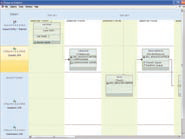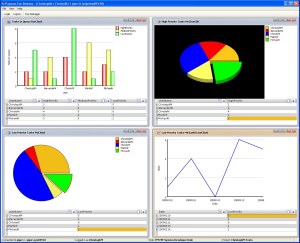The joint research project of ISIS Papyrus and the University of Vienna, CACAO (Consistency Checking, Recommendations, and Visual Modeling for ad hoc Changes by Knowledge Workers in Adaptive Case Management) has been recently successfully completed. The focus of this multi-year project, as reported earlier in the ISIS Times, was on Adaptive Case Management (ACM) research topics related to consistency and compliance of business execution performed by business users in highly adaptive business application environments.
Christoph Ruhsam, head of the ISIS Papyrus Academy, summarizes the core research results as follows:
- Automatic identification of structural inconsistencies in ACM business models
ACM cases can contain certain predefined process fragments, which shall guarantee a consistent execution at runtime.
A model checking algorithm was developed which allows to identify and resolve such inconsistencies already at design time during the release management phase before being rolled out into production.
ACM model consistency checking
- Implementation of a pattern-based language for the definition and automatic execution of compliance rules for ACM models
The implementation provides a Natural Language Compliance Rule Editor for the business administrator using terms from the domain-specific business vocabulary (ontology-based compliance rules).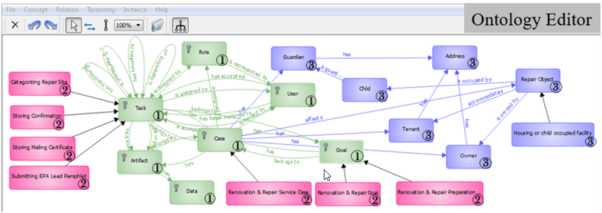
Business vocabulary editor (Ontology)
Using this approach, the system can provide reactive as well as proactive guidance taking into account both the compliance rules and the knowledge workers’ past decisions to enhance the users’ working experience. This opens the stage for new ACM-based business applications that have the capability to effectively serve the needs of business users in providing high-quality customer-focused service.
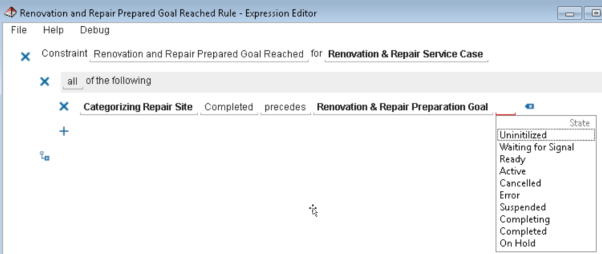
Natural language compliance rule editor
Compliance is continuously checked during the whole case execution and the business user informed by the compliance checking log being part of the case management user interface.
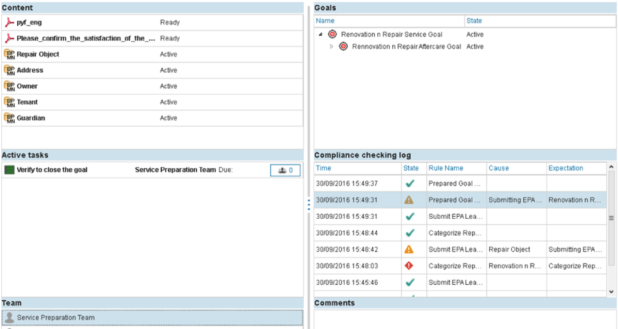
ACM business user interface with compliance log
- Runtime recommendation algorithms for business users to guide and guarantee business compliance during a highly flexible ACM case execution
The compliance rule solution mentioned above has been integrated with the Papyrus User Trained Agent (UTA) machine learning technology that has been utilized to make recommendations on best next actions in a given business context in compliance with defined business rules.
The CACAO project results were presented by Professor Uwe Zdun’s team (Project lead and Head of the Software Architecture Research Group at the University of Vienna) and ISIS Papyrus at a number of specialized conferences, published in 12 scientific papers, as well as a contribution to the new book “Intelligent Adaptability with BPM” in the Workflow Management Coalition’s BPM Excellence in Practice Series. Scientific software engineering was applied with mathematical algorithms to real-life situations and their relevance and effectiveness have been evaluated with joint industry research partners like “die Mobiliar” (results are available in the Springer book “Business Process Management Cases“). All publications are available for download from the ISIS Papyrus Website under Academic Research.
Modern businesses cannot be satisfied with a traditional procedural process design as they are highly semi- or unstructured like any customer communication. The prototype implementation using the Papyrus Business Communication and Process Platform has proven that such unstructured customer communication business applications can be defined with a pure declarative approach, giving business users the needed flexibility to focus on customer experience, while adhering to company regulations and external compliance criteria. By using such an approach, companies can significantly improve and optimize the customer experience, while meeting compliance requirements. For more information please see Building Business Solutions using Adaptive Case Management.
Consequently, ISIS Papyrus has recently announced Papyrus Converse – the new low-code platform for business users with a focus on Customer Experience (outcome) and Efficiency (processes) that will substantially speed up the delivery of new business services by making use of industry- and company-specific Business Terminology (Ontology) and Business Rules (Compliance) to help companies innovate and provide services in a conversational style with no prescribed process flows. Watch out for more and stay tuned to this site.

